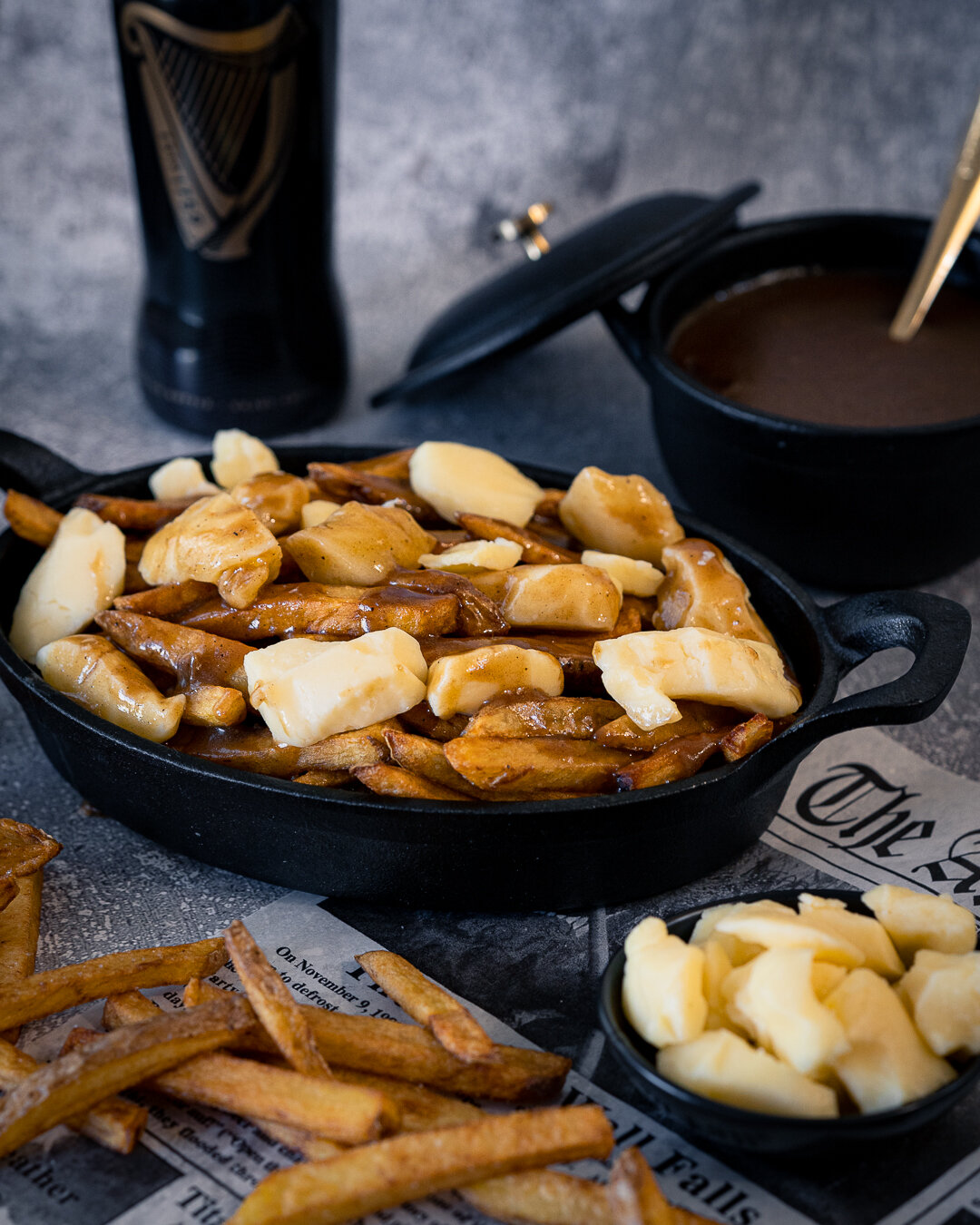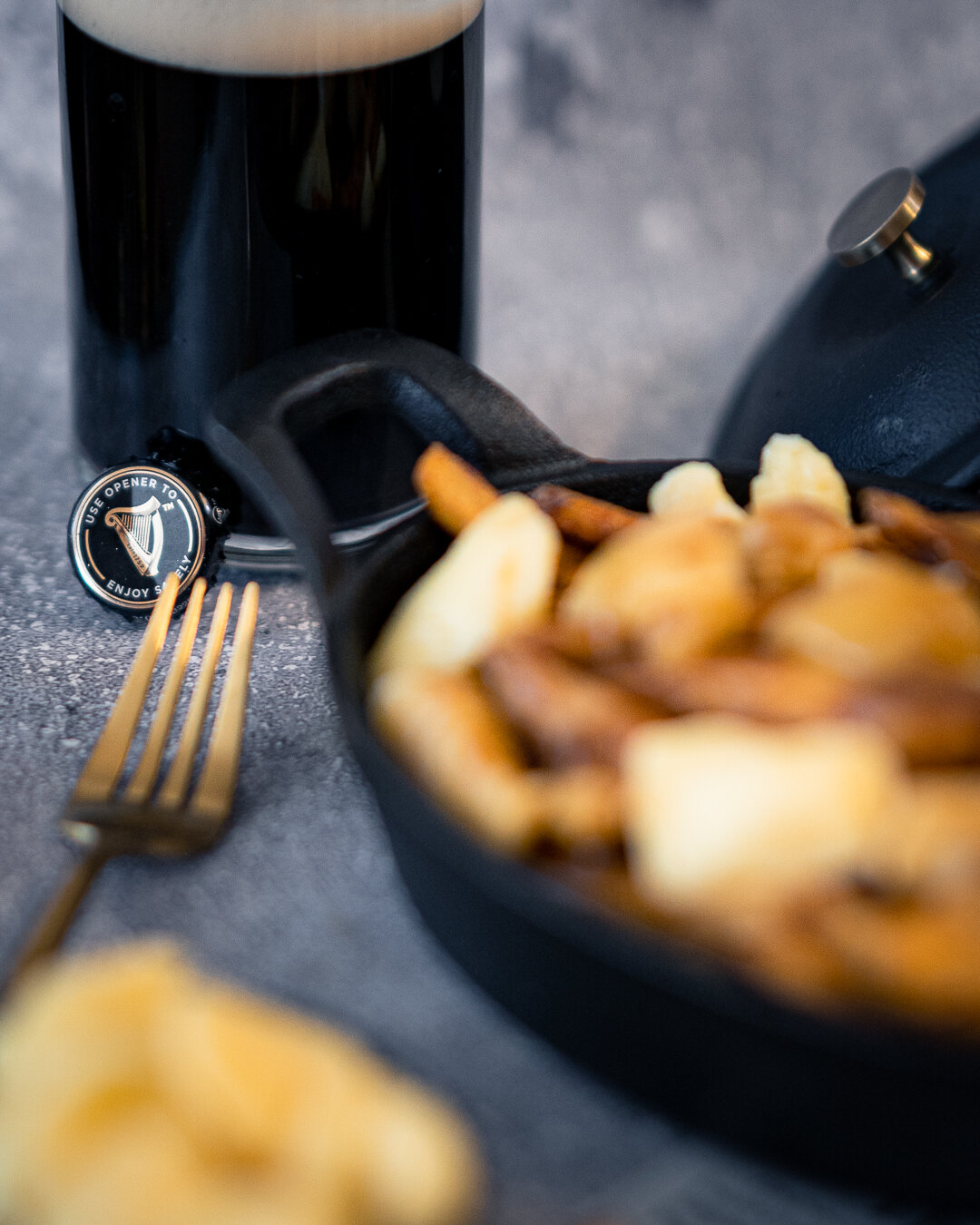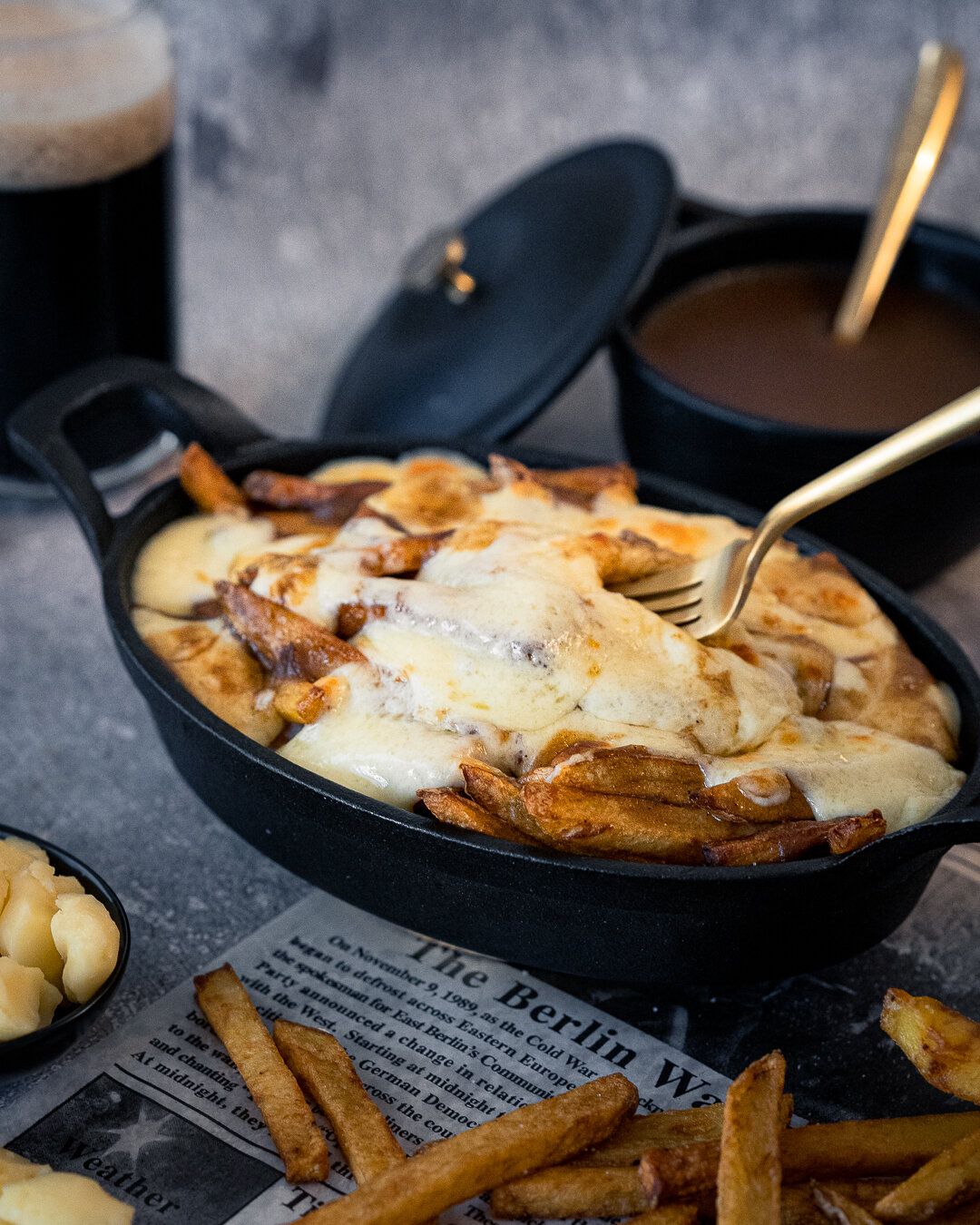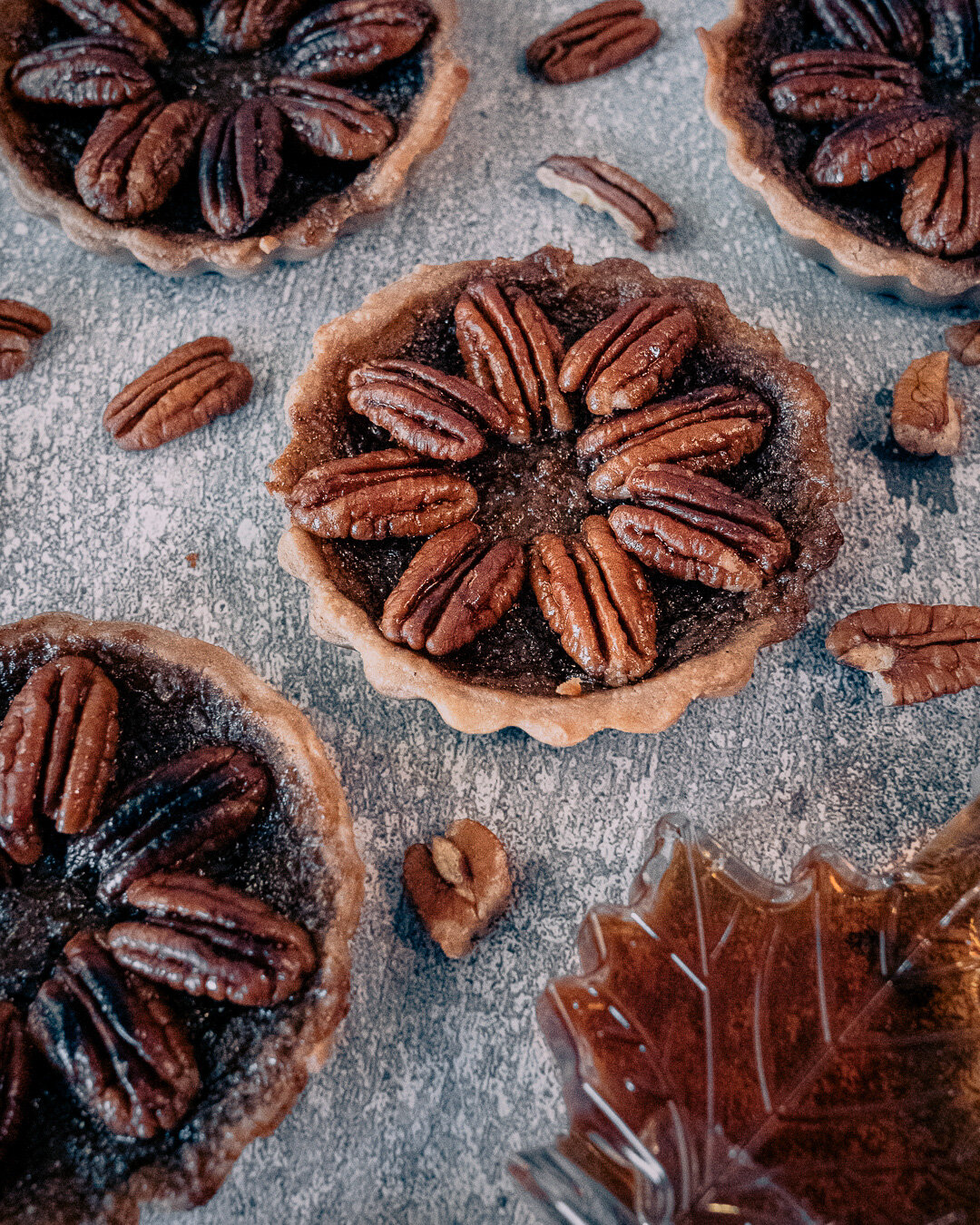Poutine

Live Free and Eat Poutine!
I have been dying to share this recipe for a really long time: Poutine! A staple from Quebec, but adored all across Canada and internationally. Try some yourself and you’ll be hooked, for life. The delicious Canadian dish consists of a glorious trinity of ingredients: perfectly crisp french fries and squeaky cheese curds, smothered in hot brown gravy, a high-calorie classic staple of Québécois casse-croûtes or “greasy spoon” cuisine. The word poutine, which carries as many as 15 different meanings in Quebec and Acadian French is a Quebecois slang word meaning “mess.” It’s a fitting expression for this messy dish itself.
Walk down the streets of downtown Montreal and Toronto after a night of drinking, you will surely see someone gorging themselves on poutine. During my university years, poutine was one of my favorite go-to grub after a late night par...I mean, late night study sessions. It was hard to pass up with so many Smoke's Poutinerie locations in Toronto, especially being so inexpensive yet so satisfying. My go to was always a meal size box of Philly Cheesesteak Poutine, which I could never finish on my own but the snack size was just...too smol. It was a comforting and filling munchie meal for a bright-eyed college student on a budget. But most importantly, it filled the emotional void from post-exam blues, giving you a temporary sense of “all is well with the world”, before the next exam strikes.
The Origin Story
Much like the debate in the USA, about the origins of the hamburger, poutine has similarly unclear beginnings. But the mystery is more alluring than frustrating. While no one can say with absolute certainty exactly where the Quebecois delicacy came from, it seems poutine was invented in rural Quebec sometime during the late 1950s, in the humble countryside of the province. That’s where a plethora of dairy farms produced the special ingredient that makes this dish so melt-in-your-mouth special: cheese curds, also known as squeaky cheese. Today, two restaurants in the area claim to be the originators of the dish but no consensus exists.
Story #1 | Le Lutin qui rit, Warwick
The most widespread claim for inventing poutine comes from the small dairy-farming town of Warwick, Québec. In 1957, a customer asked restaurateur Fernand Lachance to throw french fries and cheese curds, items the owner sold separately at his restaurant L’Idéal (later renamed Le lutin qui rit) together in one bag because he was in a rush. Legend has it when Lachance peered into the bag after the two ingredients were mixed together, he exclaimed, “Ça va faire une maudite poutine” meaning “This will make a damn mess”, using the Québécois slang “poutine” to describe a mess. Not long after, Lachance started to serve this dish at his restaurant, switching from paper bags to plates to better contain the mess and adding hot gravy to keep the dish warm.
Story #2 | Le Roy Jucep, Drummondville
This drive-by joint attracted customers who liked adding cheese curds to their french fries with gravy, a dish owner Jean-Paul Roy began selling in the 1950s. When more and more customers followed suit in curd-ifying their gravy drenched fries, Roy added the concoction to his menu. He called it fromage-patate-sauce, but the name proved to be a mouthful. “Poutine” is a mash-up of pouding, the French word for pudding, and “Ti-Pout,” the name of the restaurant’s chef. They say the proof is in the pudding, because the Canadian Intellectual Property Office has certified Roy as the official inventor of poutine. Today, Le Roy Jucep offers over 20 variations of poutine, including a poutine pizza and an Oktoberfest poutine with German sausage.
Canada’s National Dish
For many years, it was perceived negatively and mocked, and even used by some to stigmatize Quebec society. Poutine later became celebrated as a symbol of Québécois cultural pride. It was consumed in small “greasy spoon” diners, pubs, hockey arenas and roadside chip wagons called “potato shacks”. For decades it remained a country snack food in Quebec's dairy region, due to the narrow freshness window of cheddar cheese curds. Considering it’s messy and rustic look, it wasn’t exactly treated as fine dining either. When it first arrived in Montreal in the early 1970s, it was largely perceived as an unsophisticated backwoods creation or unhealthy junk food to be consumed after a night of drinking. Local chefs would make poutine to feed their staffs but had not dared to put it on their menus.
While the first generations that suffered from the poutine stigma opted to disidentify from the dish, French Canadian Millennials successfully reappropriated poutine to positively revalue the dish as a symbol of Quebecois cultural pride. In the culinary industry, attempts were also made to elevate the dish by using baked potatoes, duck stock and even foie gras, which was praised by customers and food critics. This influenced chefs all over Canada; in major cities like Toronto and Montreal chefs went on to feature poutine in their upscale menus, serving it with finer ingredients like lobster, braised beef and steak. Over the next decade, poutine gained acceptance and popularity in all types of restaurants, from haute cuisine to fast food, and spread across Canada and internationally. Today, the dish is often presented as the national dish of Canada.
As most of you know, traveling to Canada has been restricted to contain the spread of the COVID-19 pandemic. The second largest country in the world, Canada has no shortage of beautiful landscapes and it is home to vibrant and culturally rich cities from coast to coast. You may not be able to experience the enriched diversity and beautiful Canadian landscape this year, but maybe, just maybe my easy at home poutine recipe will be a slight pick-me-up until further notice.
Recipe: La Poutine
Serves: 2-4
The Fries
The perfect french fry generally has a crunchy exterior and a light, fluffy interior. Finding the right balance is tricky, but armed with the knowledge of science, it is possible. I am going to teach you guys the tried and tested double fry method. During the first fry, moisture in the center of the potato migrates to the surface after it cools and the surface gets soggy again. Then you fry off that moisture again on the second fry, giving you a drier, crisper fry.
Russet Potatoes - 4 large (300-500g), scrubbed
Water - 8 cups
Salt - 2 tbsp
Vinegar - 2 tbsp
Peanut Oil, for frying
Cut the potatoes into ¼ inch thick matchsticks, and transfer them to a large bowl filled with cold water. Rinse potatoes several times to ensure any excess sugar (starch) has been washed away.
Note: Keeping the skin - Peeling the skin is personal preference but if you are working with fresh potatoes, the skin adds another layer to the crispness of the fries.
Note: Rinsing thoroughly - If potatoes have too much sugar, they won’t crisp up properly and become unattractively dark brown as the sugar over-caramelizes, developing bitter flavors.
In a medium saucepan, add water and salt, and bring to a boil over high heat. Place the potatoes and vinegar in the water and boil until the they are fully tender but not falling apart, about 10 minutes. Drain and spread them on a paper towel lined baking sheet. Allow to dry for at least 5 minutes.
Note: Blanching the potato in vinegar - acid from the vinegar holds the potatoes together, so they don’t get mushy and fall apart while cooking.
First Fry. Heat oil in a large wok over high heat. Add ¼ of the dried fries to the hot oil and cook exactly for 1 minute. Transfer to a second paper-towel lined baking sheet. Repeat with the remaining potatoes, working in three more batches. Allow the potatoes to cool to room temperature, at least 30 minutes. The potatoes can be kept at room temperature up to 4 hours, or for the best results, frozen in a single layer overnight. For longer storage, transfer to a ziplock freezer bag.
Second Fry. Heat up the oil again over high heat. Fry ¼ of the fries until crispy and light golden brown, about 3 minutes. Transfer the potatoes to a wire rack set on a baking sheet to be drained and immediately season with salt. I need you guys to pull a salt bae here. The cooked fries can be kept hot and crisp in a 200°F oven while you cook the rest of the batch or prepare your gravy.
The Cheese Curds
Not much to be said here. Please get yourself some proper squeaky cheese curds. If it’s too difficult to acquire, you may use mozzarella but I can’t promise I won’t judge you. Cheese curds already come in big chunks, you just have to crumble them gently. If cheese curds are not available and you are using mozzarella, tear off little chunks and roll into balls.
The Gravy
Unsalted Butter - ⅓ cup
AP Flour - ¼ cup
Garlic Cloves - 2, grated
Beef Stock - 4 cups
Ketchup - 2 tbsp
Worcestershire Sauce - 1 tbsp
Soy Sauce - 1 tbsp
Balsamic Vinegar - 1 tsp (optional)
Black Pepper - 1 tsp
Salt - 1-2 tsp, depends on your palate
Water - ½ cup
Corn Starch - 2 tbsp
In a saucepan, melt the butter over medium heat. Whisk the flour into the butter and cook, whisking continuously, for 2 minutes until smooth. For my gravy, I like a darker roux but it takes time and patience, and constant stirring. After about 6 or 7 minutes it will smell a little nutty and turn pale brown. If you take it even further, about 8 to 15 minutes or longer, you'll get a dark roux.
Add the garlic and cook until soft, making sure to not let it burn, about 1-2 minutes. In a slow and steady stream, whisk in the beef stock, followed by ketchup, worcestershire sauce, soy sauce and balsamic vinegar. Bring the gravy to a simmer, whisking continuously. In a small bowl, stir together cornstarch and cold water until smooth. Whisk in the slurry into the gravy and simmer until thickened, about 5 minutes. Season with salt and black pepper. Remove from the heat and cover to keep the gravy hot.
The Poutine
Portion the fries into a large platter or individual serving dishes. Top them with delicious cheese curds. Generously ladle hot gravy on top. Serve immediately and enjoy it like the Canadians, eh!
The Toppings
For the sake of authenticity, I wanted to showcase and share the most traditional poutine recipe. In its purest form poutine is already an indulgence but the world is your oyster so feel free to put whatever toppings you like. I have seen far too many to mention but some of my favorites combinations are:
Philly Cheesesteak - steak, cheese sauce, grilled mushrooms, onions and red peppers.
Hogtown - pulled pork, double-smoked bacon, italian sausage
Good Mornin’- sausages, bacon, sunny-side-up eggs, chives
Listennnn, the possiblities are endless.
If you do recreate my recipe, make sure to tag me @thespiceodyssey on Instagram and/or Facebook.
If you do recreate our recipe
TAG & FOLLOW @TheSpiceOdyssey
Stay up to date with us on on Instagram, Pinterest, Youtube and Facebook.













